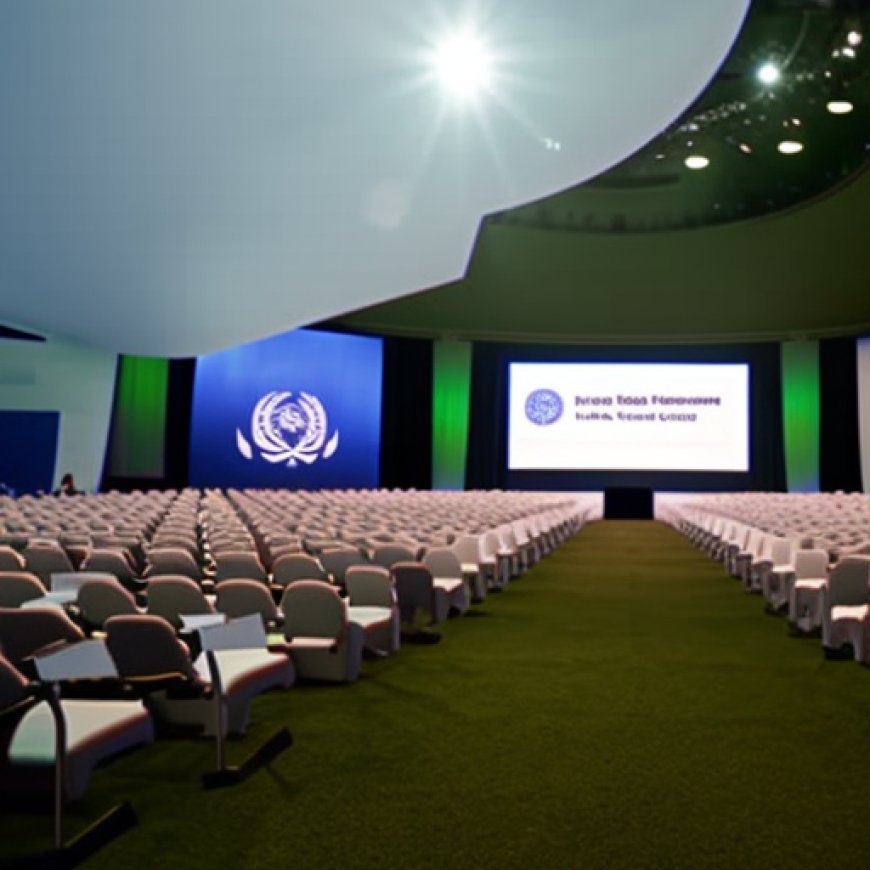UN Climate Change Conferences | United Nations
UN Climate Change Conferences | United Nations United Nations


United Nations Framework Convention on Climate Change (UNFCCC)

Every year, countries who have joined the United Nations Framework Convention on Climate Change (UNFCCC) meet to measure progress and negotiate multilateral responses to climate change. Today there are 198 Parties to the Convention.
The UNFCCC is a multilateral treaty adopted in 1992 – shortly after the first assessment report by the Intergovernmental Panel on Climate Change (IPCC) in 1990 – to stabilize greenhouse gas concentrations “at a level that would prevent dangerous anthropogenic (human-induced) interference with the climate system.”
Since entering into force in 1994, the UNFCCC has provided the basis for international climate negotiations, including landmark agreements such as the Kyoto Protocol (1997) and the Paris Agreement (2015).
The Conference of the Parties (COP)
The first Conference of the Parties (COP) was held in Berlin, Germany, in 1995. The 28th COP will be held at the end of 2023 in Dubai, United Arab Emirates. It will include the first Global Stocktake, where States assess the progress made towards the goals set in the Paris Agreement and chart a course of action.
The host country of the COP normally rotates among the five United Nations regional groups (Africa, Asia-Pacific, Eastern Europe, Latin American and the Caribbean, and Western European and Others), with regional group members determining which country from their region will make an offer to host the conference.
Sustainable Development Goals (SDGs)
- Reducing carbon emissions
- Accelerating a global energy transition
- Helping countries adapt and build resilience to compounding climate issues
- Bringing governments together
- Mobilizing the private sector, civil society, industry, and individuals to tackle the climate crisis
SDGs, Targets, and Indicators in the Article
| SDGs | Targets | Indicators |
|---|---|---|
| SDG 13: Climate Action | Target 13.1: Strengthen resilience and adaptive capacity to climate-related hazards and natural disasters | No specific indicators mentioned in the article |
| SDG 13: Climate Action | Target 13.2: Integrate climate change measures into national policies, strategies, and planning | No specific indicators mentioned in the article |
| SDG 13: Climate Action | Target 13.3: Improve education, awareness-raising, and human and institutional capacity on climate change mitigation, adaptation, impact reduction, and early warning | No specific indicators mentioned in the article |
| SDG 13: Climate Action | Target 13.a: Implement the commitment undertaken by developed-country parties to the UNFCCC to a goal of mobilizing jointly $100 billion annually by 2020 from all sources to address the needs of developing countries in the context of meaningful mitigation actions and transparency on implementation and fully operationalize the Green Climate Fund through its capitalization as soon as possible | No specific indicators mentioned in the article |
| SDG 13: Climate Action | Target 13.b: Promote mechanisms for raising capacity for effective climate change-related planning and management in least developed countries and small island developing States, including focusing on women, youth, and local and marginalized communities | No specific indicators mentioned in the article |
1. Which SDGs are addressed or connected to the issues highlighted in the article?
- SDG 13: Climate Action
The article primarily focuses on the United Nations Framework Convention on Climate Change (UNFCCC) and its role in addressing climate change. SDG 13 specifically targets climate action and is directly connected to the issues discussed in the article.
2. What specific targets under those SDGs can be identified based on the article’s content?
- Target 13.1: Strengthen resilience and adaptive capacity to climate-related hazards and natural disasters
- Target 13.2: Integrate climate change measures into national policies, strategies, and planning
- Target 13.3: Improve education, awareness-raising, and human and institutional capacity on climate change mitigation, adaptation, impact reduction, and early warning
- Target 13.a: Implement the commitment undertaken by developed-country parties to the UNFCCC to a goal of mobilizing jointly $100 billion annually by 2020 from all sources to address the needs of developing countries in the context of meaningful mitigation actions and transparency on implementation and fully operationalize the Green Climate Fund through its capitalization as soon as possible
- Target 13.b: Promote mechanisms for raising capacity for effective climate change-related planning and management in least developed countries and small island developing States, including focusing on women, youth, and local and marginalized communities
These targets are relevant to the issues discussed in the article as they highlight the need to strengthen resilience, integrate climate change measures, improve education and awareness, mobilize financial resources, and promote capacity building for effective climate change-related planning and management.
3. Are there any indicators mentioned or implied in the article that can be used to measure progress towards the identified targets?
No specific indicators are mentioned or implied in the article. However, indicators related to measuring progress towards the identified targets could include:
- Number of countries with climate change adaptation plans and policies in place
- Level of public awareness and understanding of climate change issues
- Amount of financial resources mobilized for climate change mitigation and adaptation
- Number of capacity building programs implemented for climate change planning and management in least developed countries and small island developing States
SDGs, Targets, and Indicators in the Article
| SDGs | Targets | Indicators |
|---|---|---|
| SDG 13: Climate Action | Target 13.1: Strengthen resilience and adaptive capacity to climate-related hazards and natural disasters | No specific indicators mentioned in the article |
| SDG 13: Climate Action | Target 13.2: Integrate climate change measures into national policies, strategies, and planning | No specific indicators mentioned in the article |
| SDG 13: Climate Action | Target 13.3: Improve education, awareness-raising, and human and institutional capacity on climate change mitigation, adaptation, impact reduction, and early warning | No specific indicators mentioned in the article |
| SDG 13: Climate Action | Target 13.a: Implement the commitment undertaken by developed-country parties to the UNFCCC to a goal of mobilizing jointly $100 billion annually by 2020 from all sources to address the needs of developing countries in the context of meaningful mitigation actions and transparency on implementation and fully operationalize the Green Climate Fund through its capitalization as soon as possible | No specific indicators mentioned in the article |
| SDG 13: Climate Action | Target 13.b: Promote mechanisms for raising capacity for effective climate change-related planning and management in least developed countries and small island developing States, including focusing on women, youth, and local and marginalized communities | No specific indicators mentioned in the article |
Behold! This splendid article springs forth from the wellspring of knowledge, shaped by a wondrous proprietary AI technology that delved into a vast ocean of data, illuminating the path towards the Sustainable Development Goals. Remember that all rights are reserved by SDG Investors LLC, empowering us to champion progress together.
Source: un.org

Join us, as fellow seekers of change, on a transformative journey at https://sdgtalks.ai/welcome, where you can become a member and actively contribute to shaping a brighter future.







